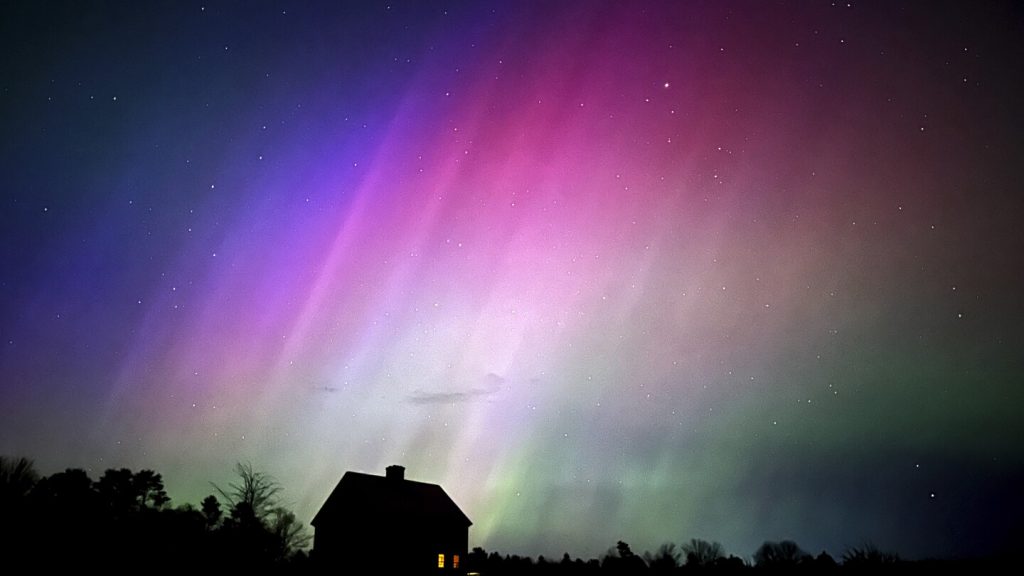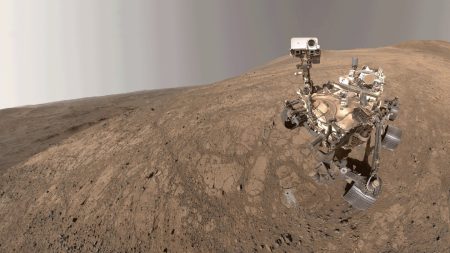The sun, currently at the peak of its 11-year cycle, unleashed a burst of plasma on Sunday, setting the stage for a potential New Year’s spectacle of auroras across the northern United States. This surge of solar activity, expected to reach Earth on Monday, could paint the night skies with vibrant hues of the Northern Lights, particularly on Monday and Tuesday nights. The prime viewing time is anticipated to be the early morning hours of Tuesday before dawn, offering the best chance to witness this celestial display.
Skywatchers in a swathe of northern states, including Washington, Montana, North Dakota, South Dakota, Minnesota, Wisconsin, Michigan, New Hampshire, Vermont, and Maine, are poised for a potential light show. Furthermore, portions of Oregon, Idaho, Wyoming, Iowa, and New York might also catch glimpses of the aurora. To optimize viewing conditions, observers are advised to seek out dark locations away from city lights and allow their eyes to adjust to the darkness. Smartphone cameras can sometimes capture faint auroral activity not readily visible to the naked eye, further enhancing the experience.
This surge in solar activity is a consequence of the sun reaching the solar maximum of its 11-year cycle, a period characterized by increased solar flares and coronal mass ejections. These events, in turn, heighten the likelihood of auroras appearing at lower latitudes. Scientists predict this active phase will persist for at least another year, although the precise timing of the peak activity can only be determined retrospectively, months after it occurs. This increased solar activity not only creates mesmerizing auroral displays but also carries the potential for minor disruptions to high-frequency radio communications, primarily affecting airlines and amateur radio operators. The National Oceanic and Atmospheric Administration (NOAA) is closely monitoring these solar storms to assess their potential impact.
The recent history of solar activity underscores the power and unpredictability of these events. In May, NOAA issued a rare severe geomagnetic storm warning, the strongest in over two decades. This storm resulted in widespread auroral displays across the Northern Hemisphere, captivating audiences with its intensity and reach. Similarly, in October, a powerful solar storm surprised skygazers far beyond the usual auroral zones, bringing the spectacle to locations like Germany, the United Kingdom, New England, and even New York City. These events highlight the dynamic nature of solar activity and its potential to produce awe-inspiring phenomena.
The beauty of auroras lies in the interaction between the sun’s energetic particles and Earth’s magnetic field. When these charged particles collide with atoms in the upper atmosphere, they excite the atoms, causing them to emit light. The color of the aurora depends on the type of atom being excited: oxygen typically produces green and red light, while nitrogen creates blue and purple hues. This interplay of solar energy and Earth’s atmosphere creates a breathtaking display of dancing lights, a testament to the powerful forces at play in our solar system.
The prediction of auroras, while informed by scientific understanding of solar activity, remains subject to the inherent variability of space weather. While the current solar storm suggests a high probability of auroral displays, the exact timing, intensity, and geographical extent remain somewhat uncertain. As such, skywatchers are encouraged to be patient and persistent in their pursuit of this elusive natural wonder. The reward of witnessing the aurora borealis, a mesmerizing dance of light across the night sky, makes the effort worthwhile, offering a glimpse into the captivating dynamics of our solar system.










